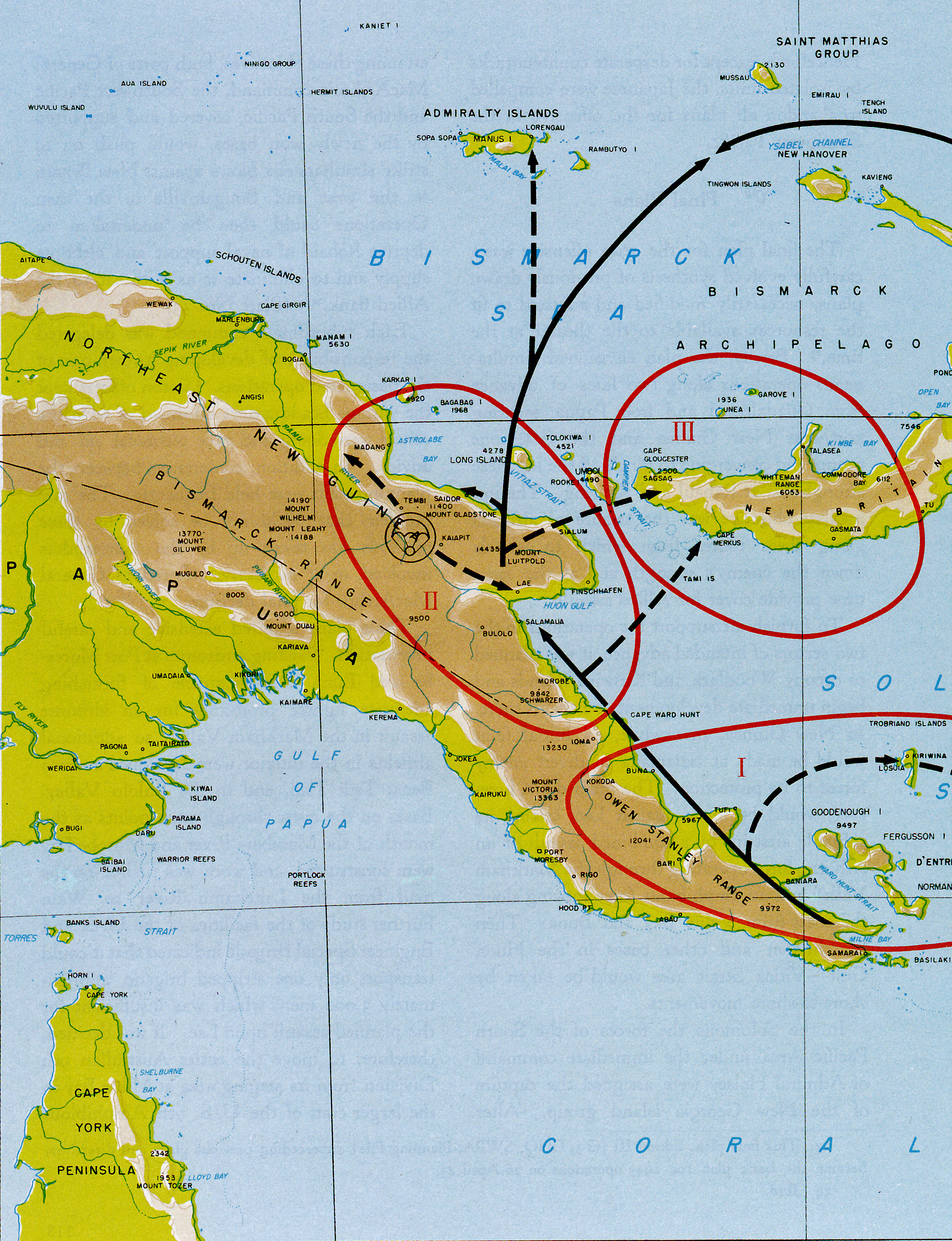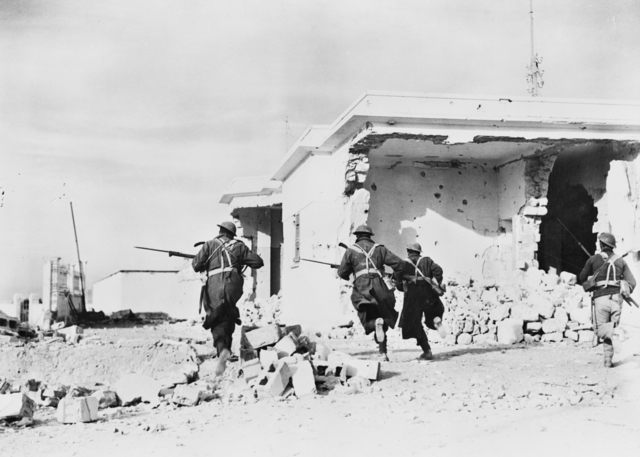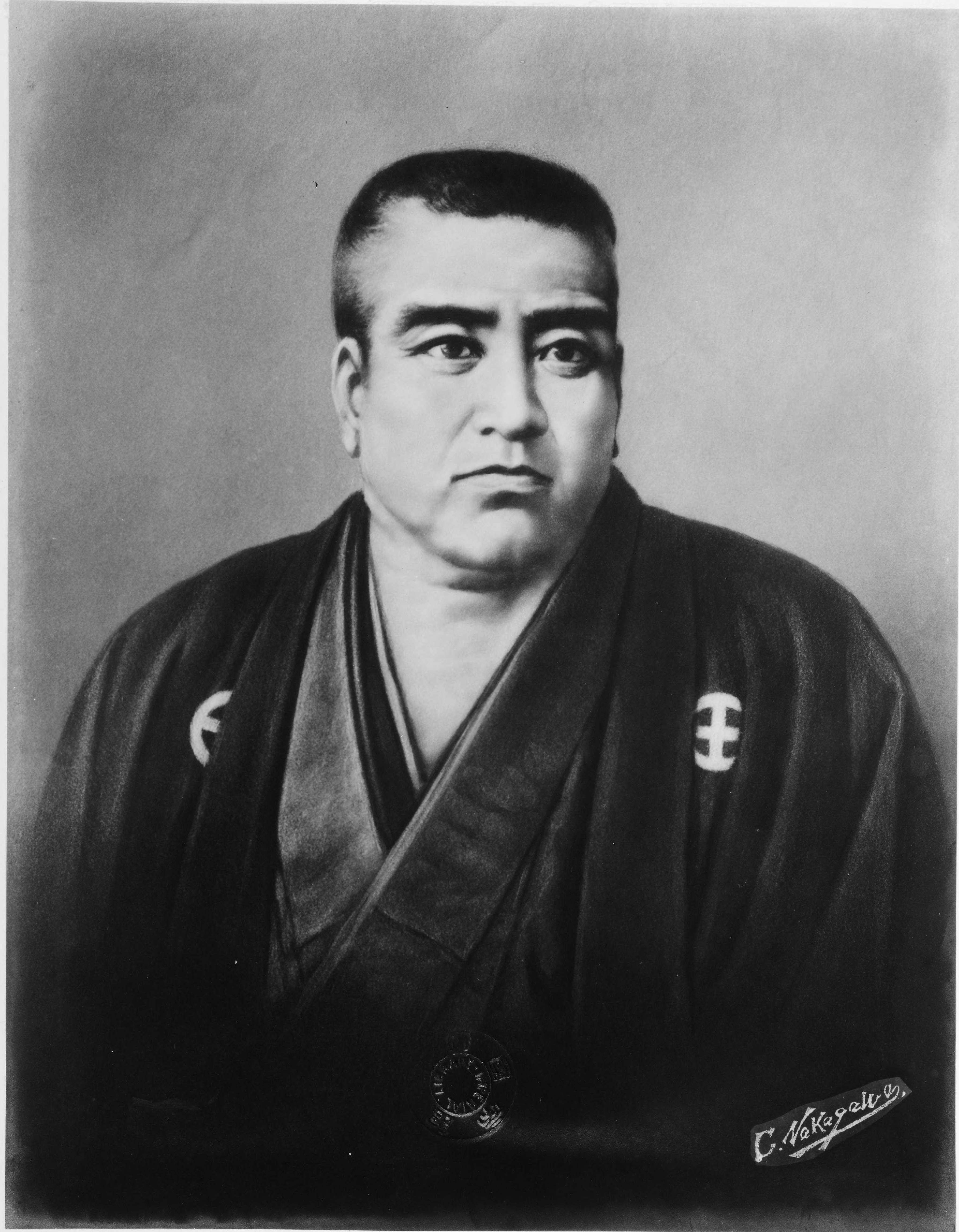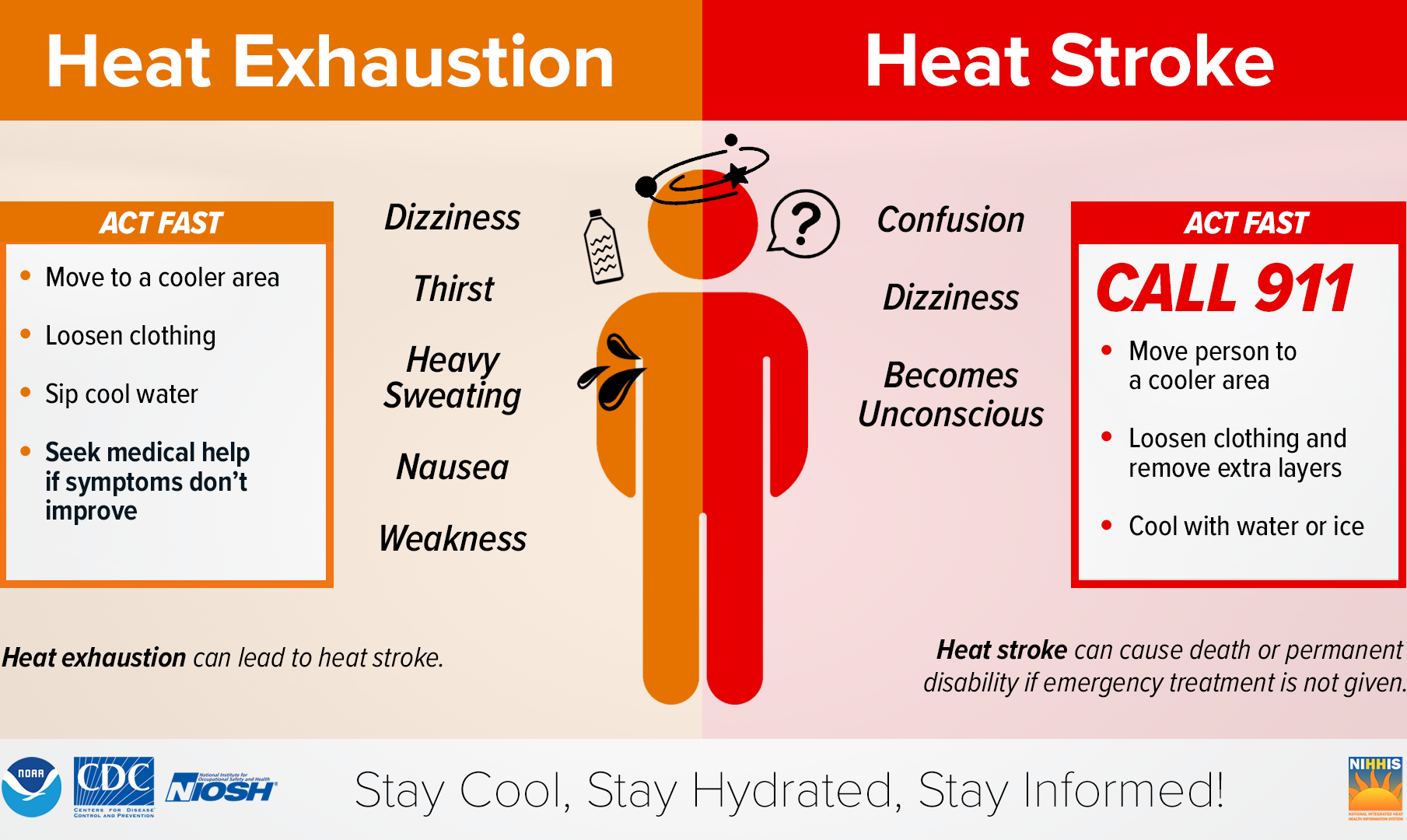|
Japanese Eighteenth Army
The was a field army of the Imperial Japanese Army during World War II. History The Japanese 18th Army was formed on November 9, 1942, under the Japanese Eighth Area Army of the Southern Expeditionary Army Group for the specific task of opposing landings by Allied forces in Japanese-occupied New Guinea. Upon establishment, it was made up of three divisions: the 20th, which had been raised from men from Kyushu, and the 41st and 51st Divisions formed from the Kantō region. New Guinea campaign Both the 20th and 41st Divisions arrived in New Guinea safely. However, the 51st Division, including the army's commander, Hatazō Adachi, and his senior staff, came under Allied air attack while en route from their supply base at Rabaul to Lae, in the Battle of the Bismarck Sea. All eight transport ships and four destroyers were sunk with the loss of 3,664 men, and only 2,427 men of the division were rescued. Operation Cartwheel, an Allied master plan implemented from mid-1943, prog ... [...More Info...] [...Related Items...] OR: [Wikipedia] [Google] [Baidu] |
Infantry
Infantry, or infantryman are a type of soldier who specialize in ground combat, typically fighting dismounted. Historically the term was used to describe foot soldiers, i.e. those who march and fight on foot. In modern usage, the term broadly encompasses a wide variety of subspecialties, including light infantry, irregular infantry, heavy infantry, mountain infantry, motorized infantry, mechanized infantry, Airborne forces, airborne infantry, Air assault, air assault infantry, and Marines, naval infantry. Other subtypes of infantry, such as line infantry and mounted infantry, were once commonplace but fell out of favor in the 1800s with the invention of more accurate and powerful weapons. Etymology and terminology In English, use of the term ''infantry'' began about the 1570s, describing soldiers who march and fight on foot. The word derives from Middle French , from older Italian (also Spanish) ''infanteria'' (foot soldiers too inexperienced for cavalry), from Latin '' ... [...More Info...] [...Related Items...] OR: [Wikipedia] [Google] [Baidu] |
Operation Cartwheel
Operation Cartwheel (1943 – 1944) was a major military operation undertaken by the Allies in the Pacific theatre of World War II. The ultimate goal of Cartwheel was to neutralize the major Japanese base at Rabaul. The operation was directed by the Supreme Allied Commander in the South West Pacific Area (SWPA), General Douglas MacArthur, whose forces had advanced along the northeast coast of New Guinea and occupied nearby islands. Allied forces from the South Pacific Area, under Admiral William Halsey, advanced through the Solomon Islands toward Bougainville. The Allied forces from Australia, the Netherlands, New Zealand, the United States, and various Pacific Islands took part in the operation. Background Japanese forces had captured Rabaul, on the island of New Britain in the Territory of New Guinea, from Australian forces in February 1942. Rabaul became a major forward base for Japanese forces in the South Pacific, and in turn became the main objective for Al ... [...More Info...] [...Related Items...] OR: [Wikipedia] [Google] [Baidu] |
Commanding Officer
The commanding officer (CO) or commander, or sometimes, if the incumbent is a general officer, commanding general (CG), is the officer in command of a military unit. The commanding officer has ultimate authority over the unit, and is usually given wide latitude to run the unit as they see fit, within the bounds of military law. In this respect, commanding officers have significant responsibilities (for example, the use of force, finances, equipment, the Geneva Conventions), duties (to higher authority, mission effectiveness, duty of care to personnel), and powers (for example, discipline and punishment of personnel within certain limits of military law). In some countries, commanding officers may be of any commissioned rank. Usually, there are more officers than command positions available, and time spent in command is generally a key aspect of promotion, so the role of commanding officer is highly valued. The commanding officer is often assisted by an executive officer (XO) or s ... [...More Info...] [...Related Items...] OR: [Wikipedia] [Google] [Baidu] |
Wewak
Wewak is the capital of the East Sepik province of Papua New Guinea. It is on the northern coast of the island of New Guinea. It is the largest town between Madang and Jayapura. It is the see city (seat) of the Roman Catholic Diocese of Wewak. History Between 1943 and 1945, in World War II, Wewak was the site of the largest Japanese airbase in mainland New Guinea. The base was subjected to repeated bombing by Australian and American forces, most notably in one massive attack on 17 August 1943. Directly to the west of the town centre is a peninsula known as Cape Wom, which was the site of the surrender of Japanese forces in New Guinea on 13 September 1945. The site now houses a small memorial. The former Japanese airfield is still in use as the Wewak International Airport. In August 1945 two war crimes trials were held near Wewak for mutilation and cannibalism. First Lieutenant Takehiro Tazaki was convicted and sentenced to death (later commuted to 5 years imprisonment with ... [...More Info...] [...Related Items...] OR: [Wikipedia] [Google] [Baidu] |
Cape Wom
Cape Wom is a cape (or small peninsula) near Wewak, Papua New Guinea, pointing into the Dogreto Bay of the Bismarck Sea The Bismarck Sea (, ) lies in the south-western Pacific Ocean within the Papua New Guinea, Papua New Guinean exclusive economic zone. It is located north-east of the island of New Guinea and south of the Bismarck Archipelago. It has coastlines i .... It was the location of the unconditional surrender by Lieutenant General (Lt Gen) Hatazo Adachi, Commander of the Japanese 18th Army in New Guinea on September 13, 1945. A Cape Wom Memorial Park with the Surrender Memorial is located at the spot. References [...More Info...] [...Related Items...] OR: [Wikipedia] [Google] [Baidu] |
6th Division (Australia)
The 6th Division was an infantry division of the Australian Army. It was raised briefly in 1917 during World War I, but was broken up to provide reinforcements before seeing action. It was not re-raised until the outbreak of World War II, when it was formed as a unit of the Second Australian Imperial Force (2nd AIF). Throughout 1940–41 it served in the North African Campaign, the Greek campaign, on Crete and in Syria, fighting against the Germans, Italians and Vichy French. In 1942, the division left the Middle East and returned to Australia to meet the threat of Japan's entry into the war. Part of the division garrisoned Ceylon for a short period of time, before the division was committed to the New Guinea campaign. In New Guinea, its component brigades had a major role in the successful counter-offensive along the Kokoda Track, at Buna–Gona and around Salamaua–Lae in 1942–43. Throughout late 1943–44, the division was re-organised in Australia before being committ ... [...More Info...] [...Related Items...] OR: [Wikipedia] [Google] [Baidu] |
Banzai Charge
Banzai charge or Banzai attack () is the term that was used by the Allied forces of World War II to refer to Japanese human wave attacks and swarming staged by infantry units. This term came from the Japanese battle cry , and was shortened to banzai, specifically referring to the bayonet charge tactic used by the Imperial Japanese Army during the Pacific War. This tactic was used when the Japanese commanders of infantry battalions foresaw that a battle was about to be lost, as a last ditch effort in thwarting Allied forces. Origin The banzai charge is considered to be one method of , a suicide attack, or suicide before being captured by the enemy such as ''seppuku''. The origin of the term is a classical Chinese phrase in the 7th-century '' Book of Northern Qi'', which states "", "A true man would atherbe the shattered jewel, ashamed to be the intact tile." Among the rules there existed a code of honor that was later used by Japanese military governments. With the revolu ... [...More Info...] [...Related Items...] OR: [Wikipedia] [Google] [Baidu] |
Malnutrition
Malnutrition occurs when an organism gets too few or too many nutrients, resulting in health problems. Specifically, it is a deficiency, excess, or imbalance of energy, protein and other nutrients which adversely affects the body's tissues and form. Malnutrition is a category of diseases that includes undernutrition and overnutrition. Undernutrition is a lack of nutrients, which can result in stunted growth, wasting, and being underweight. A surplus of nutrients causes overnutrition, which can result in obesity or toxic levels of micronutrients. In some developing countries, overnutrition in the form of obesity is beginning to appear within the same communities as undernutrition. Most clinical studies use the term 'malnutrition' to refer to undernutrition. However, the use of 'malnutrition' instead of 'undernutrition' makes it impossible to distinguish between undernutrition and overnutrition, a less acknowledged form of malnutrition. Accordingly, a 2019 report by The Lance ... [...More Info...] [...Related Items...] OR: [Wikipedia] [Google] [Baidu] |
Heat Exhaustion
Heat exhaustion is a heat-related illness characterized by the body's inability to effectively cool itself, typically occurring in high ambient temperatures or during intense physical exertion. In heat exhaustion, core body temperature ranges from 37 °C to 40 °C (98.6 °F to 104 °F). Symptoms include profuse sweating, weakness, dizziness, headache, nausea, and lowered blood pressure, resulting from dehydration and serum electrolyte depletion. Heat-related illnesses lie on a spectrum of severity, where heat exhaustion is considered less severe than heat stroke but more severe than heat cramps and heat syncope. Climate change and increasing global temperatures have led to more frequent and intense heat waves, raising the incidence of heat exhaustion. Risk factors include hot and humid weather, prolonged heat exposure, intense physical exertion, limited access to water or cooling, and certain medications that can exacerbate fluid and serum electrolyte losses incl ... [...More Info...] [...Related Items...] OR: [Wikipedia] [Google] [Baidu] |
Malaria
Malaria is a Mosquito-borne disease, mosquito-borne infectious disease that affects vertebrates and ''Anopheles'' mosquitoes. Human malaria causes Signs and symptoms, symptoms that typically include fever, Fatigue (medical), fatigue, vomiting, and headaches. In severe cases, it can cause jaundice, Epileptic seizure, seizures, coma, or death. Symptoms usually begin 10 to 15 days after being bitten by an infected ''Anopheles'' mosquito. If not properly treated, people may have recurrences of the disease months later. In those who have recently survived an infection, reinfection usually causes milder symptoms. This partial Immunity (medical), resistance disappears over months to years if the person has no continuing exposure to malaria. The mosquitoes themselves are harmed by malaria, causing reduced lifespans in those infected by it. Malaria is caused by protozoa, single-celled microorganisms of the genus ''Plasmodium''. It is spread exclusively through bites of infected female ... [...More Info...] [...Related Items...] OR: [Wikipedia] [Google] [Baidu] |
Battle Of Hollandia
The Battle of Hollandia (code-named Operation Reckless) was an engagement between Allies of World War II and Japanese forces during World War II. The majority of the Allied force was provided by the United States, with the bulk of two United States Army infantry divisions being committed on the ground. Air and naval support consisted largely of U.S. assets, although Australia also provided air support during preliminary operations and a naval bombardment force. The battle took place between 22 April and 6 June 1944 and formed part of the New Guinea campaign. The operation consisted of two landings, one at Tanahmerah Bay and the other at Humboldt Bay, near Hollandia. The landings were undertaken simultaneously with the amphibious invasion of Aitape ("Operation Persecution") to the east. The battle was an unqualified success for the Allied forces, resulting in a withdrawal by the Japanese to a new strategic defense line in the west of New Guinea and the abandonment of all positi ... [...More Info...] [...Related Items...] OR: [Wikipedia] [Google] [Baidu] |
Landing At Aitape
The Landing at Aitape (code-named Operation Persecution) was a battle of the Western New Guinea campaign of World War II. American and Allies of World War II, Allied forces undertook an amphibious landing on 22 April 1944 at Aitape on the northern coast of Papua New Guinea. The amphibious landing was undertaken simultaneously with the landings at Yos Sudarso Bay, Humboldt and Tanahmerah Bays to Battle of Hollandia, secure Hollandia to isolate the Eighteenth Army (Japan), Japanese 18th Army at Wewak. Operations in the area to consolidate the landing continued until 4 May, although US and Japanese forces fought further actions in western New Guinea following a Japanese counter-offensive that lasted until early August 1944. Aitape was subsequently developed into an Allied base of operations and was used by Australian forces throughout late 1944 and into 1945 during the Aitape–Wewak campaign. Background Aitape, located on the northern coast of the Territory of New Guinea about sou ... [...More Info...] [...Related Items...] OR: [Wikipedia] [Google] [Baidu] |









